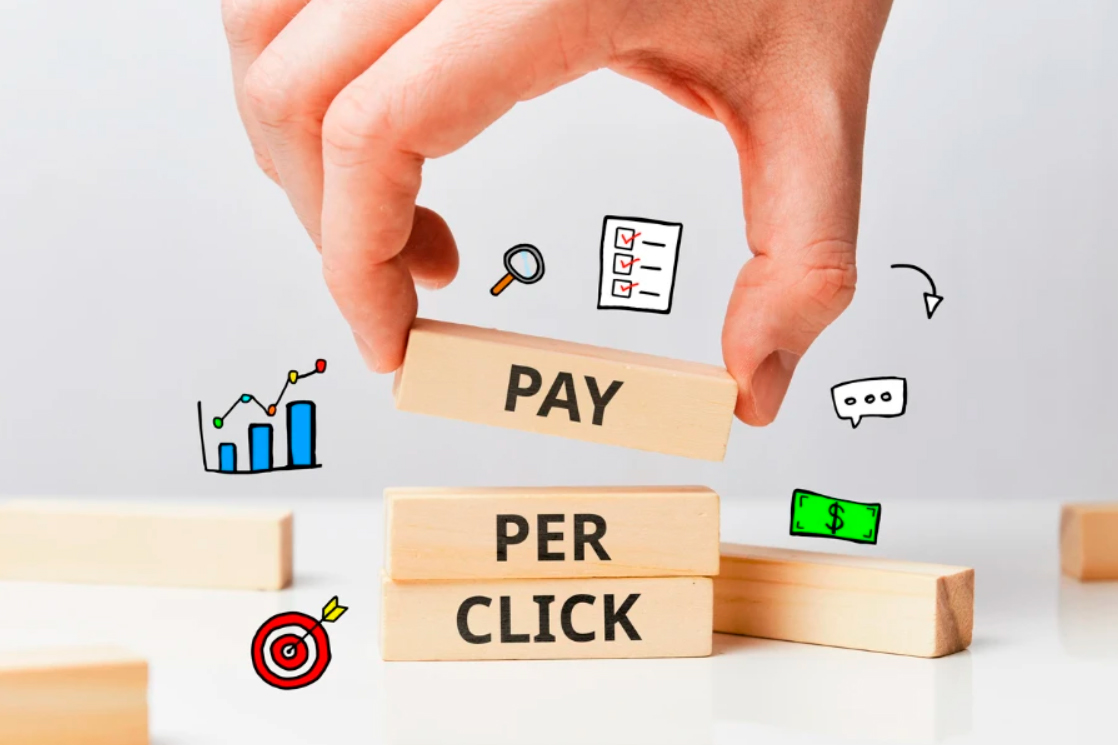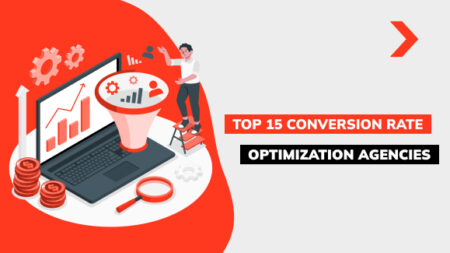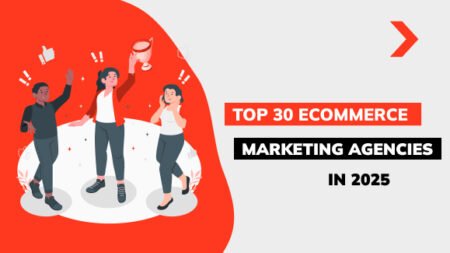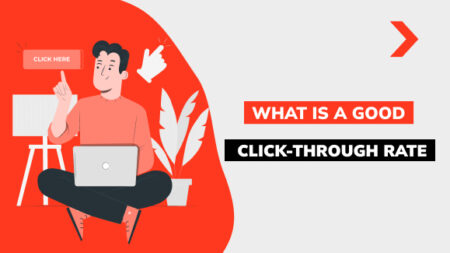Ecommerce Advertising Techniques to Maximize Sales and improve Brand Awareness
Today, Ecommerce advertising on the World Wide Web is crucial. We’re talking about digital advertising presented in various formats – banners, texts, videos, audio recordings. It’s showcased to users across different internet sources. The target audience for display is selected directly by the client, the advertiser (business owner, advertiser, etc.). For advertising in ecommerce to yield results, the specialists managing the project always rely on criteria such as keywords, geolocations, gender, age, devices used by people, and so on.
There are quite a few types of ecommerce marketing, for example, omnichannel marketing and others. It includes formats such as textual, media, banner, teaser, video, native (through bloggers and experts in social media using recommendations, reels, stories, etc.).

What is Ecommerce Advertising?
Ecommerce advertising is the promotion of services, products, goods, and other offerings using online tools and digital marketing. Examples include conversational ads (bloggers or experts discussing products, goods, or services they are testing on their social media), ecommerce ad(s) on various websites, resources, and mobile applications, as well as diverse email marketing campaigns (sending emails with texts, images, etc.). All these methods attract customers online and positively influence user engagement in online purchases. These methods will help your business expand its customer base, increase sales, become more recognizable, and compete effectively with larger players in its niche.
Ecommerce Ads Strategies Overview
A modern ecommerce advertising strategy (strategies), in the general sense, is a long-term plan aimed at achieving success in various activities such as sports, business, politics, etc., or a set of sequential steps for planning specific situations. It’s important to note that ecommerce advertising strategies are the foundation of any successful business. Having a meticulously developed, structured, clear plan allows your brand to adapt to changes in the modern market and act based on previously set goals. Since tasks, budgets, resources, and other capabilities vary for everyone, there are no universal advertising strategies suitable for the majority.

Social Media Ads
Ecommerce advertising on popular and well-known social media platforms is the most effective tool in digital marketing in the modern world. The rapid development of social platforms has turned them into much more than just places for communication and information exchange. They have become excellent sources for promoting your business, where your customers can purchase the products and services they need. The advantage of using online platforms is the vast audience they offer. Social media provides a wide range of advertising techniques and tools to customize targeting and engage consumers. Developing a sound ecommerce advertising strategy (strategies) can lead to excellent results – increasing brand awareness, strengthening reputation, expanding traffic reach, and gaining trust from your customers, among others.
Google Ads
Current Google Ads is a type of contextual advertising in ecommerce advertising, which is very important. It is part of the commercial services of the Google search company. All advertising announcements are displayed on Google search results pages and on web resources within the Google AdSense partner network. This service is particularly attractive for targeting and launching ecommerce advertising strategy (strategies), as it can significantly influence the conversion rate of your brand website. Even smartphones, gadgets, and tablets based on Android have Google search as the default, allowing users of these devices to easily see various advertisements when using the system.
Retargeting
Today, retargeting is one of the tools in ecommerce marketing. It allows showing ads to the target audience that has shown interest in your products. Specialists implement email retargeting through ecommerce advertising strategy (strategies) so that when a user browses the Internet from a device and seeks to make a purchase through an already authorized mobile application or social platform, specialists place special blocks of code from advertising services on resources that track authorization. Therefore, when a customer enters an online store, the service immediately displays catalogs with products according to the account data.
Omnichannel Marketing
In ecommerce ad(s), there is a concept called omnichannel marketing. It cannot be organized without special technical solutions. Specialists need a platform where all communication channels are combined, allowing for efficient customer interaction. Omnichannel marketing involves the seamless use of multiple online communication channels to interact with consumers. It addresses tasks such as process organization and control (data integration, analytics collection, etc.), increasing sales (specialists can offer personalized solutions by reviewing dialogues), and improving service quality (integrating all communication channels into a unified system significantly reduces response time).
Content Marketing
When promoting any type of ecommerce advertising, textual informational materials are indispensable. This refers to content marketing, which is necessary for engaging visitors in purchasing products and services and converting them into real potential customers. By writing relevant texts, posts, descriptions, articles, and incorporating relevant keywords, the promoted website will thrive online. This ecommerce marketing aims to demonstrate the benefits, advantages, and strengths of your products, brand, or business through texts. Articles are always written with uniqueness, usefulness, correctness, readability, etc., in mind.

Influencer and Affiliate Marketing
In Ecommerce advertising, apart from email retargeting and other tools, there is also a form of ecommerce ad called affiliate marketing. This involves different businesses directly collaborating with modern influencers who have a huge audience (tens, hundreds of thousands, or millions of subscribers) on their social media accounts. These ad formats are carried out through online stories and reels, which are uploaded as engaging videos with corresponding conversational text. These modern advertising techniques offer numerous opportunities for every brand, including increasing sales in their online store. When the advertising strategy is well-thought-out, such ad formats and collaborations often work excellently, leaving everyone satisfied with the results.
Brand Awareness Strategies
Any Ecommerce advertising should be accompanied by specific goals. Advertising strategies are always developed according to what the business aims to achieve. If increasing your sales is the goal, certain tools are employed, if raising brand awareness is necessary, completely different tactics are used. Overall, each advertising strategy is tailor-made from scratch and on an individual basis. This approach helps increase conversion rates and your sales, enhance reach and visibility, improve website recognition, and achieve growth in other important metrics during project implementation.
Influencer Marketing
To make your ads as effective as possible, it’s necessary to apply other ecommerce advertising techniques such as influencer marketing. When influential individuals, celebrities, or experts who enjoy popularity begin to endorse specific product pages, particular products, or services, their audience often listens (because their target audience trusts them). Thanks to recommendations from influential people, celebrities, and experts, it’s possible to increase brand recognition, trust, and strengthen market reputation. Such online advertising also helps startups, not just established and famous brands, as users across various social platforms start recognizing their brand.
Community Building
Building a strong community involves bringing people together through various online events, initiating joint business projects, creating networks, and so on. When a person feels that they belong to a community, for businesses, it means one thing – increased social communication with customers and their engagement with purchases. Moreover, by building the right ecommerce advertising, the audience can feel like “welcome guests” on the promoted website. Additionally, such a community can become an excellent source of additional information.
Short-Form Video
Lately, ecommerce advertising techniques involving the development and creation of short videos spanning several seconds, one minute, or slightly longer have become very popular. These can be incorporated not only in email marketing and sent out in newsletters alongside emails, but also used in crafting online advertising for further publication on popular social platforms, web resources, and websites. Even if a brand has just one landing page, a short video presentation about the company, firm, enterprise, individual, or organization can be published on it. It’s even better to publish video clips on Google and other major platforms, as this way your ads will be visible to a huge audience.
Ecommerce Sales Strategies
For advertising for ecommerce to work excellently, attracting a large number of people and capturing the attention of internet users, it is important to develop a special ecommerce sales strategy. Naturally, it should include ecommerce advertising, which can be implemented into the project in the form of email marketing or email retargeting, SMS marketing, etc. The main thing is that after such ecommerce ad(s), the business achieves increased conversion rates, expanded reach and organic traffic, paying customers, and overall profit maximization.

Leveraging Paid Advertising Platforms
Currently, most websites require additional promotion to increase conversion rates, attract target audiences, and boost traffic. One effective method of ecommerce advertising is using paid advertising online platforms. It is important to study the competition, select the right keywords, create attractive ads, set the advertising campaign budget, optimize the campaign, expand the audience through remarketing, use various formats advertising for ecommerce, and more. Experimenting with paid advertising platforms shows that they start to grow in terms of performance when integrated into the page experience.
Facebook and Instagram Ads
Ecommerce advertising through Instagram and Facebook is done by targeting settings. It is through targeting that the page experience is enhanced, making the webpage more visible, recognizable, and popular. Targeting is one of the effective mechanisms of marketing. It allows singling out a specific target audience from all internet users based on certain criteria. Consequently, such an audience will constantly encounter conversational ads or online advertising tailored to their specific demographic.
TikTok Ads
Ecommerce advertising can only be done through videos on TikTok, which should be created with special music, transitions, etc. In the video, links to the landing page or other branded websites being promoted can be included. TikTok has become a popular platform worldwide with many active users with diverse interests. Virtually any business segment can find its potential customers on the platform. However, to reach the audience with conversational ads in the form of videos, it is important to consider specific promotion algorithms and content delivery methods.
Google Ads Optimization
This is a system for setting up and placing contextual ads in the most popular system and on Google’s partner websites, where conversational ads, display and text ads, and other types of ads can be seen. When launching campaigns, clients choose special places to display ads. Specialists can set targeting settings, analyze statistics, and subsequently optimize ads to meet the needs of the business and its target audience.
Product Feed Optimization
On every resource, website, landing page, advertising tools such as titles are used. These “titles” consist of feeds that are pulled into the title text. Essentially, when launching and placing contextual advertising, it is necessary to create such an important attribute as a title. It helps people understand faster whether they have landed on the right website and whether it contains what they are looking for, while search engine algorithms help recognize the website and distinguish it from competitors and other similar portals.
Search Ad Strategies for Ecommerce
Among the strategies that will help ecommerce thrive this year, several should be highlighted. Firstly, it is important to start with the right goals and key performance indicators for your advertising campaigns. Secondly, focus on keywords with high intent or frequency that are capable of converting. Thirdly, structure your account for maximum profit. Fourthly, test different ad formats and placements. Fifthly, automate and optimize bid allocation strategies.

Permission Marketing: Email & SMS
The main idea of permission marketing is the ability to engage in direct dialogues with consumers or sell products and services to buyers. However, it is important to obtain their consent for such communication. To obtain consent, it is sufficient to utilize email or SMS strategies, which involve sending messages directly to subscribers with the necessary content. This content can be video, text, or other forms. This method of permission marketing builds trust with potential customers.
Email Marketing Segmentation and Personalization
Utilizing data about the behavior of one’s customers constitutes segmentation and personalization. Marketers successfully target their email activity across multiple segments, so personalization occurs when the recipient’s name is included in the email subject lines. Fortunately, modern technologies afford this privilege. Additionally, efforts are made in this direction to send emails to the “right” people, send emails at the right time according to their time zone, send emails for the right reasons, and so forth. This approach makes it much easier to find a path to the intended recipient—the one who will be most receptive to the message.
SMS Marketing
Today, SMS marketing is very popular. It is one of the most commonly used strategies, involving the sending of mini-short text messages to reach the target audience. Thanks to this effective tool, it is possible to attract a significant amount of traffic because modern individuals all have mobile devices, cell phones, and other gadgets with mobile numbers. This method is most effective for promoting products and services, as well as helping businesses communicate directly with customers through their smartphones. If there is a need to urgently convey information to a customer, SMS messages are used.
Additional Insights
The work of any successful business is definitely not a collection of chaotic actions but a clear plan in which literally every step is outlined. Indeed, one of the steps towards success is the development of an individual, clear, and competent marketing strategy. This modern tool allows for taking actions systematically, step by step, and organized, which help in promoting brands.

Key Insights into Effective Strategies
Some of the most effective ideas for developing businesses of various activities include: creating networks at special events, employing omnichannel marketing, conducting consultations (research), using various methods of proposition, participating in industry events and conferences, hosting webinars, managing social media platforms, developing one’s own individual website, creating downloadable and gated content, fostering a culture of SMS messaging and email newsletters to potential buyers, publishing informational materials in the brand’s blog, digital advertising (pay-per-click, affiliate advertising, banner advertising, and other types), SEO promotion, and much more.
Examples of Successful Ecommerce Ads
Among several successful e-commerce ventures that truly deserve attention, we can highlight: Skype (the ability to conduct video conferences from anywhere in the world in real-time), Mailchimp (the world’s largest American platform for creating newsletters), Amazon (an example of a company providing B2B services to businesses dealing with end customers), Spotify (the ability to listen to music without restrictions), Nike Air Force 1 (rare sneaker models that have been discontinued), and many others.
FAQ
What’s the difference between ecommerce advertising and ecommerce marketing?
Ecommerce marketing is the utilization of digital methods and practices (both paid and unpaid) to promote a business’s products and services online with the ultimate goal of increasing sales. On the other hand, ecommerce advertising is the practice of distributing paid advertisements to promote or sell products and services online. Both concepts are united by their ultimate goals – increasing brand awareness, attracting traffic, engaging customers, and driving sales.
What are the advertising strategies in eCommerce?
Some of the most advanced and common advertising strategies in ecommerce include creating and utilizing email lists, increasing organic brand presence on social platforms, optimizing the website for SEO, creating valuable and engaging content for people, experimenting with Google ads, targeting on social platforms, participating in online events, influencer marketing using various tools, and more.
How much does e-commerce advertising cost?
The cost of ecommerce advertising depends specifically on the volume and complexity of the project that needs to be worked on and for which an advertising campaign needs to be created. Typically, companies consider the type of business (small, medium, large) and the services they require. Pricing for advertising services can vary and depends on the type of marketing that needs to be applied. Generally, all companies engaged in promotion set reasonable, loyal, and profitable prices for their services in this field.
What is the most powerful advertising strategy?
There is no one strategy that can be singled out among the rest as the best and most powerful. In general, a good strategy incorporates elements of effective advertising such as digital tactics, humor, global strategies, local heroes, showcasing the company’s advantages through content, organization, or enterprise, and when “every second counts,” which means fast website loading, etc.





